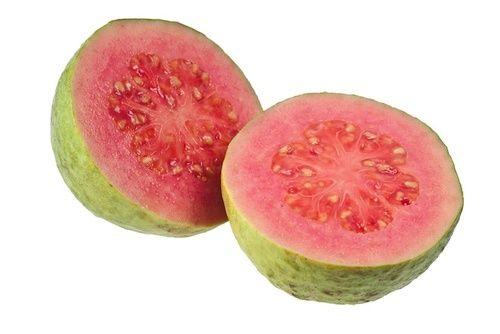La guava is the fruit of Psidium guajava, rich in vitamin C it is useful for the digestive system and for diabetes mellitus. Let's find out better.
> Calories, nutritional values and properties of guava
> How to eat

Description of the plant
The love of the human being for the guava goes back centuries: it is well documented since in all the'South America and the Caribbean many people began to cultivate it well before the domestication and cultivation of maize and beans.
Psidium guajava is a modestly sized evergreen that offers fruits that vary in color depending on the variety: the skin, which is generally greenish, can also be yellow or, more rarely, violet; while the pulp, which is white most of the time, can also be pink or purplish. There pulp is buttery and it can recall pear or melon, while the flavor is aromatic, sweet and exotic: it can recall a peach with tones of vanilla and menthol.
Guava, ally of
Skin, the whole digestive system, pancreas and stomach in particular.
Calories, nutritional values and properties of guava
Guava contains 68 kcal per 100 g.
Let's talk about a fruit which is one veritable mine of vitamin C (four times that of oranges), followed by moderate levels across the whole range of B vitamins, and from minerals such as copper, phosphorus, manganese and potassium.
Depending on the color of the fruit, the pigmentation is given by carotenoids, anthocyanins, retinoids. It has good levels of fiber, carohydrates, omega-3s.
It has always been used as a medicinal plant: against vomiting, diarrhea, gastroenteriti, toothache, infections. Studies from 2013 have shown excellent specific action against diabetes mellitus, while in 2012 its ability to act against cancer cells was demonstrated.
It also has antiviral properties and is able to soothe ulcer and skin diseases.
Guava among the foods rich in vitamin C: discover the others

Curiosity
In many countries it is sold as street food with a sprinkle of ground chilli. The fruit was already known by the Aztecs who called it Xalxocotl, that is sand plum.
History of the guava
Botanists believe that the guava fruit is native to an area ranging from Brazil to the Caribbean; here it was found by Europeans who, given its very high percentage of vitamin C, perceived its value and began to take it with them on sea trips to ward off scurvy. In this way it reached the Asian colonies and Africa, where it found an ideal environment for its growth.
How to eat guava
The peel is edible, but many prefer to cut the fruit in two to eat the pulp with a spoon. THE seeds are particularly hardi and it is better to avoid chewing them to avoid damaging the teeth. It is an ideal ingredient for many recipes: juices, ice creams, mustards, creams, desserts.
READ MORE
The properties and benefits of Pitaya or Dragonfruit
|


























